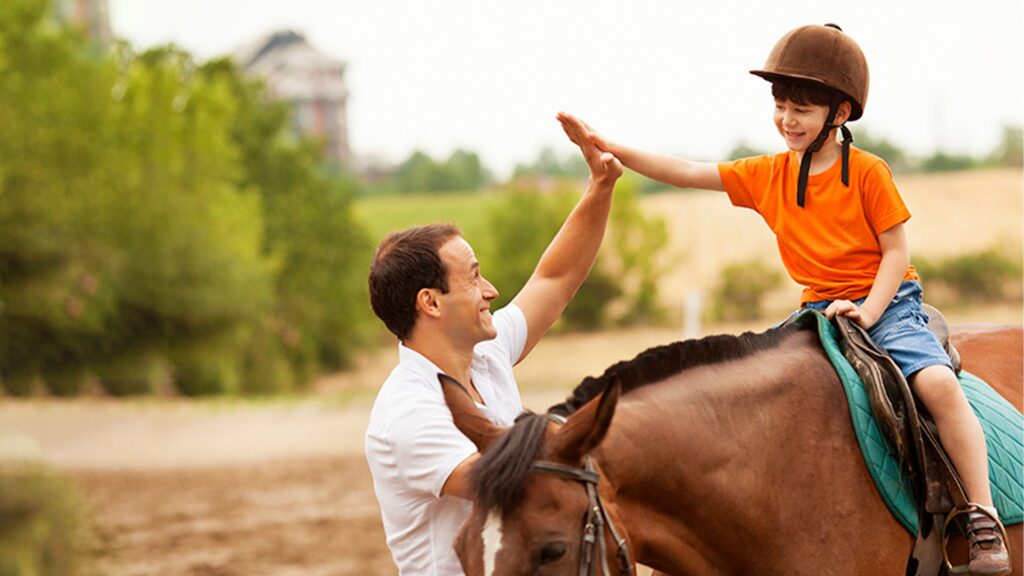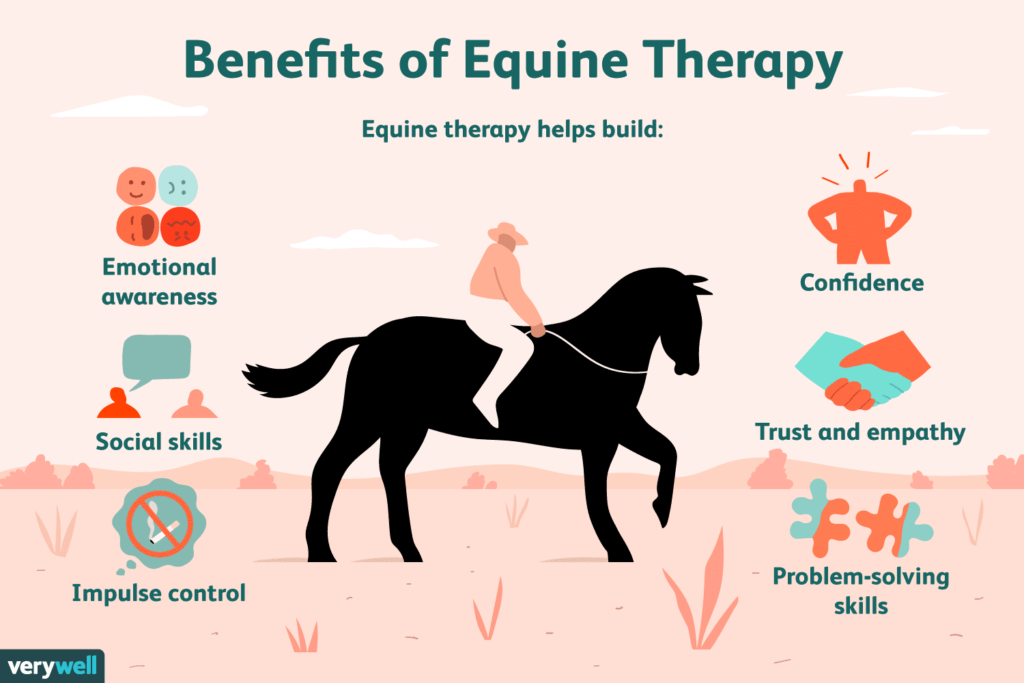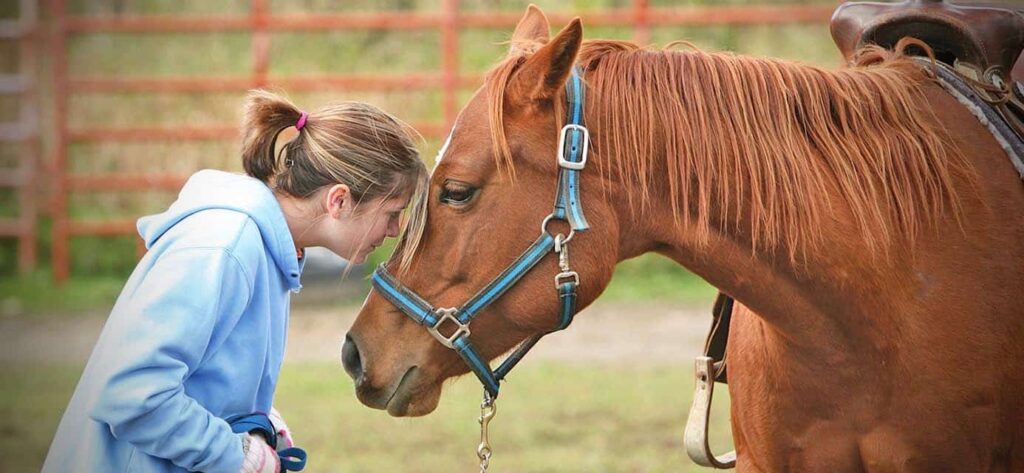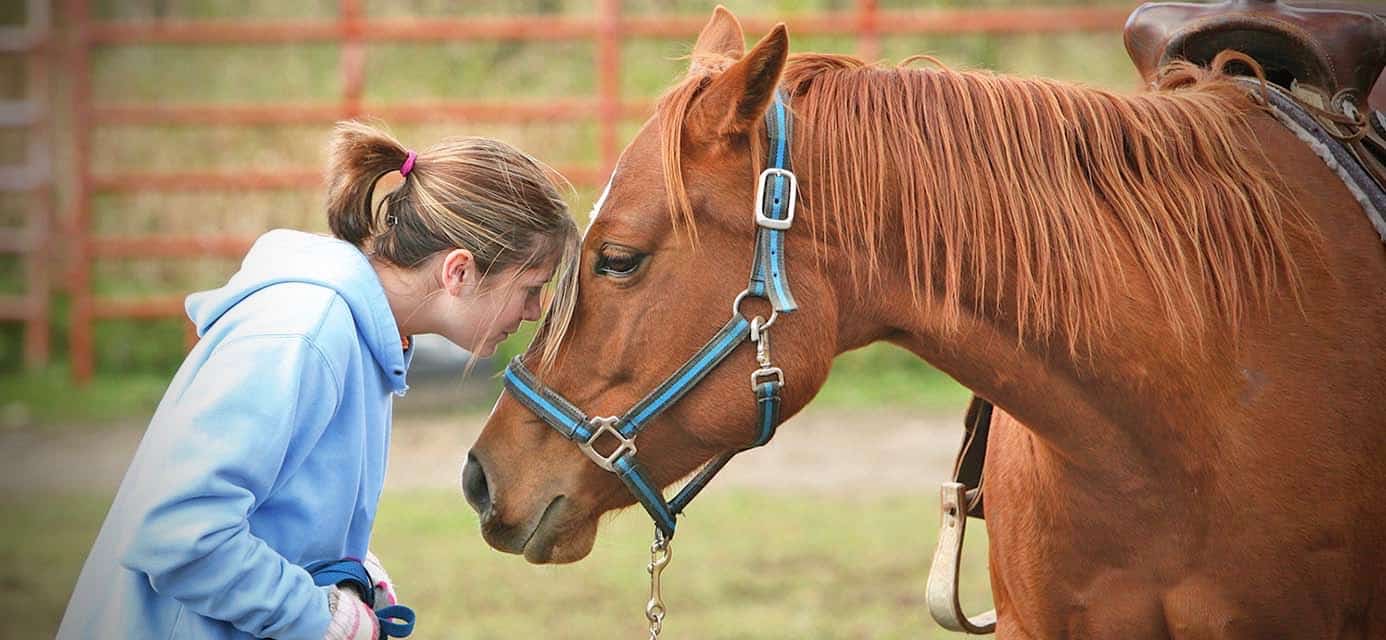If you’re looking for a unique and effective form of therapy, look no further than horseback riding. This article will explore the fascinating connection between horseback riding and animal-assisted therapy. From the physical benefits of riding to the emotional bond formed with horses, we will uncover the various ways in which horseback riding can promote healing and well-being. Whether you’re a horse lover or simply curious about alternative therapies, this article will provide you with a deeper understanding of the incredible impact that horses can have on our mental and physical health. So saddle up and join us as we embark on a journey into the world of horseback riding and its connection to animal-assisted therapy.

The History of Horseback Riding
Ancient Origins of Horseback Riding
Horseback riding has a long and storied history that dates back to ancient times. It is believed that humans first began to ride horses as early as 4000 BC in the Eurasian steppes, where the domestication of horses took place. This marked a significant advancement in transportation and warfare, as riding a horse allowed humans to cover greater distances and move more quickly.
Horseback Riding in Ancient Civilizations
Throughout history, the use of horses for riding has been prominent in various ancient civilizations. In ancient Greece, for example, horseback riding was not only used for transportation but also played a significant role in sports and warfare. The Greeks were known for their cavalry, which played a crucial role in battles and was considered a symbol of power and prestige. Similarly, in ancient Rome, horseback riding was a common practice, and the Romans utilized horses for transportation, agriculture, and military purposes.
The Evolution of Horseback Riding
As time passed, the art of horseback riding evolved and developed further. In the Middle Ages, knights on horseback became iconic figures, representing chivalry and honor. During this period, horsemanship skills were highly valued and were an essential part of a knight’s training. As centuries went by, the use of horses for everyday transportation declined with the introduction of automobiles. However, horseback riding continued to be practiced for recreational and sports purposes, such as horse racing and equestrian competitions.
Benefits of Horseback Riding
Physical Benefits
Horseback riding offers a range of physical benefits. It is a form of exercise that engages various muscle groups, including the core, legs, and arms. The motion of riding a horse also helps improve balance, coordination, and flexibility. Additionally, horseback riding requires the rider to maintain proper posture, which can lead to better spinal alignment and strengthen the back muscles. Regular horseback riding can contribute to overall physical fitness and cardiovascular health.
Mental and Emotional Benefits
Engaging in horseback riding can have significant mental and emotional benefits. Spending time with horses and being in nature can promote feelings of calmness and relaxation. The rhythmic motion of riding can have a soothing effect on the mind, reducing stress and anxiety. Horseback riding also provides an opportunity for individuals to develop a deep bond with their horse, fostering feelings of companionship, trust, and emotional connection. These positive interactions can boost mood and improve overall mental well-being.
Therapeutic Benefits
Horseback riding is widely recognized for its therapeutic benefits. It has been used as a form of therapy for individuals with physical, cognitive, and emotional disabilities. The movement of the horse stimulates the rider’s muscles, promoting strength, coordination, and improved motor skills. The rhythmic motion also has a calming effect on individuals with sensory processing disorders, helping them regulate their sensory responses. Additionally, the emotional connection formed between the rider and the horse can provide a sense of comfort, support, and improved self-esteem.

Introduction to Animal-Assisted Therapy
Definition and Concept of Animal-Assisted Therapy
Animal-assisted therapy (AAT) is a therapeutic intervention that involves animals as part of the treatment process. It is a goal-driven approach that utilizes the positive effects of animals to improve physical, emotional, and cognitive well-being. AAT can encompass various animals, including dogs, cats, birds, and, of course, horses. The presence of animals in therapy sessions can enhance motivation, facilitate emotional connection, and provide a sense of comfort and support to individuals undergoing treatment.
Types of Animals Used in Therapy
Different types of animals can be used in animal-assisted therapy, depending on the specific goals and needs of the individuals receiving treatment. Dogs are commonly used for emotional support and assistance tasks. Cats can provide comfort and relaxation in calming environments. Birds, such as parrots, have been shown to have positive effects on individuals with communication and speech difficulties. Horses are often used in equine-assisted therapy due to their size, gentle nature, and ability to form strong bonds with humans.
Benefits of Animal-Assisted Therapy
Animal-assisted therapy has been widely recognized for its numerous benefits. Research has shown that interactions with animals can reduce stress, lower blood pressure, and increase the release of endorphins, promoting a sense of well-being. Animals also provide non-judgmental companionship, which can be particularly beneficial for individuals struggling with social interactions or feelings of loneliness. AAT has been shown to improve mood, decrease symptoms of anxiety and depression, and enhance overall quality of life.

